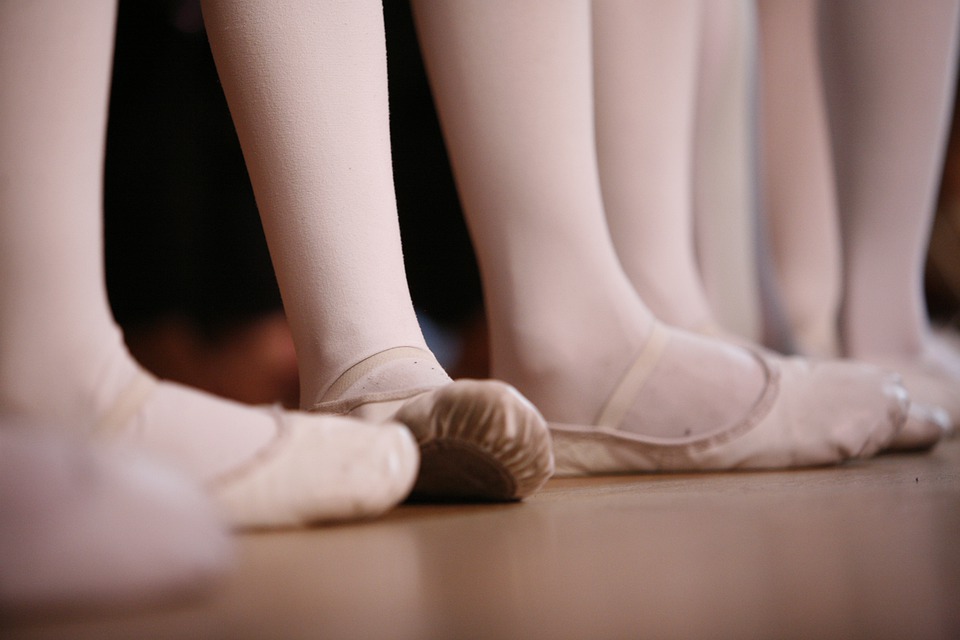Ballet shoes are the most important part of any ballet dancer’s attire. Choosing the right shoe can be hard when there is such a variety out there. Whether you’re buying new shoes or looking for a secondhand pair, we’ve got some details that will help you make an informed decision and find the perfect footwear!

Foot type
The first thing to consider when shopping for ballet slippers is your foot type: pointe, demi-pointe, or street. Pointe shoes should have a narrow vamp because it helps keep toes in alignment while dancing en pointe; demi-pointes should be wider than pointes to provide more support for feet that aren’t on their toes; street slippers offer lots of flexibility and comfort for the day-to-day wear.
Width
Pointe shoes should be very snug at first because they will stretch with use. If you have a wide foot, you’ll need to find a shoe that is wide enough for your foot without being too loose because a shoe will break in and become wider over time.
Don’t worry about pointe shoe width too much – many dancers (including professionals) go through phases of using different widths depending on their needs at the time.
Length
Ballet shoes are designed to protect your feet from injury when dancing en pointe or demi-pointe; an ill-fitting shoe won’t support your feet properly and may cause problems like corns, bunions, bruises, sprains, and fractures.
Pointe shoes need to be a proper size for your foot in length as well as width, with the widest part of the shoe being just behind your toes.
Fabric
Most ballet slippers are made from leather or canvas because they’re both durable and flexible.
Leather
Leather is a good choice if you have a wide foot or a high arch because it stretches to conform to the shape of your foot over time. However, leather can dry out and crack if not treated properly so avoid using conditioner too frequently – about once every 3-6 months should be fine unless you dance outside in wet weather often.
You can reduce cracking by using thin layer of petroleum jelly on the inside of the shoe where your foot will rest.
Canvas
Canvas is a good choice if you have a narrow or low-arched foot because it provides better support than leather. It’s also easier to clean than leather shoes, especially after using conditioner!
However, canvas does not stretch as well as leather so don’t buy this kind of slipper any smaller than necessary – it won’t be able to conform to your foot without about an inch of extra space at the heel that will just cause problems.
Also, over time the fabric may become baggy and floppy which can affect performance (but isn’t usually noticeable outside class). The plus side is that can make them last much longer!
Style
Slip-on shoes
These are perhaps the most popular type of ballet slippers because they’re easy to wear and take off – but they offer little support and can be hard to fit correctly.
Split-sole
These shoes have a center seam that runs from the tip of the shoe down the arch, which makes them easy to mold to your feet. They also provide great support for your feet!
Turnshoe
Turnshoes usually have leather soles and elastic drawstrings on the uppers so you can tighten them as needed. Since they don’t need any laces or buckles, these kinds of shoes are many people’s first choice when buying new ballet slippers.
However, it is very important to try on your turnshoes carefully before purchasing, because they do not stretch and may be too small or narrow if you buy them first and then try to return them.
Fit
A properly-fitting shoe will be snug without pinching your toes and the tip of the shoe should rest against the tip of your big toe when standing flat on a hard surface. Never buy shoes that are too long!
The more space there is between your toes and the end of the ballet slipper (about 1cm), the greater chance you have of injury.
In conclusion, no matter what type of ballet slippers you choose, it’s always best to allow yourself plenty of time for fittings and trying out different brands before buying new shoes – this will


